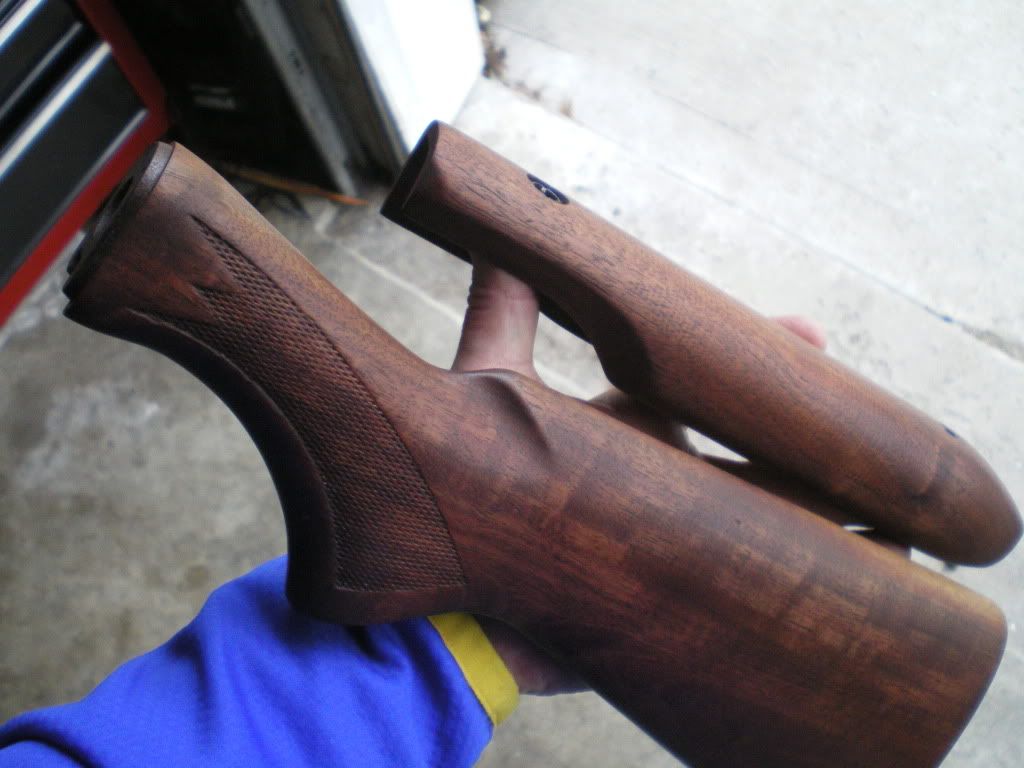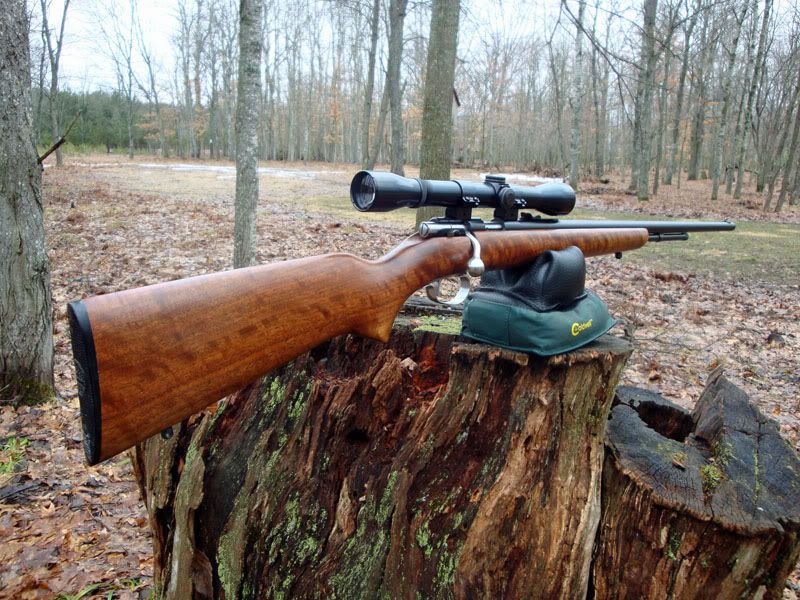
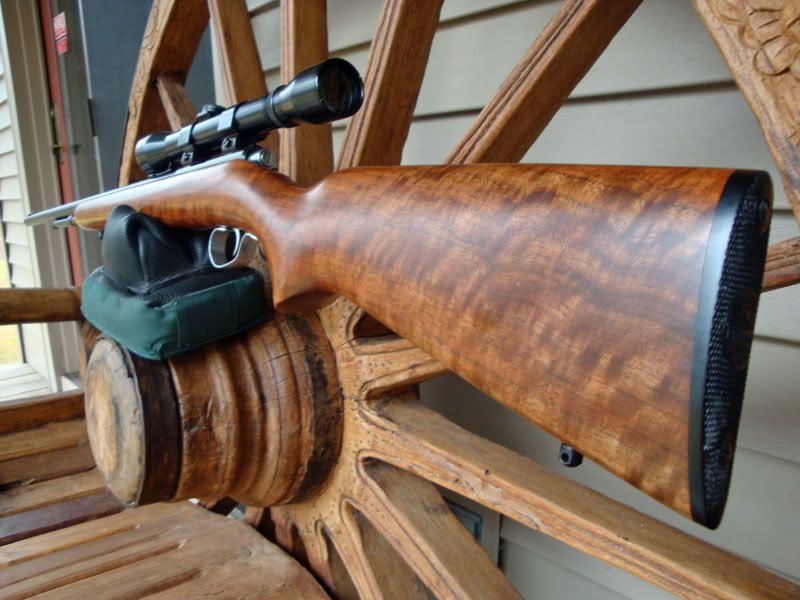
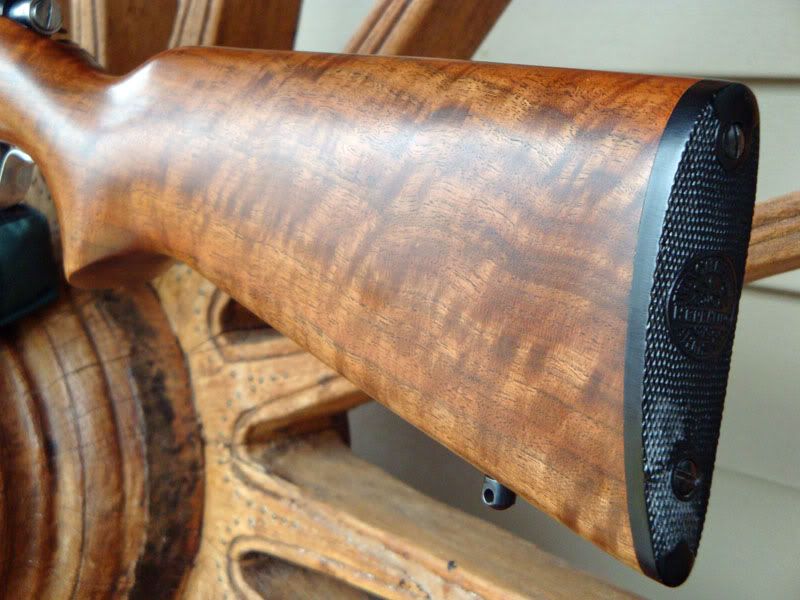
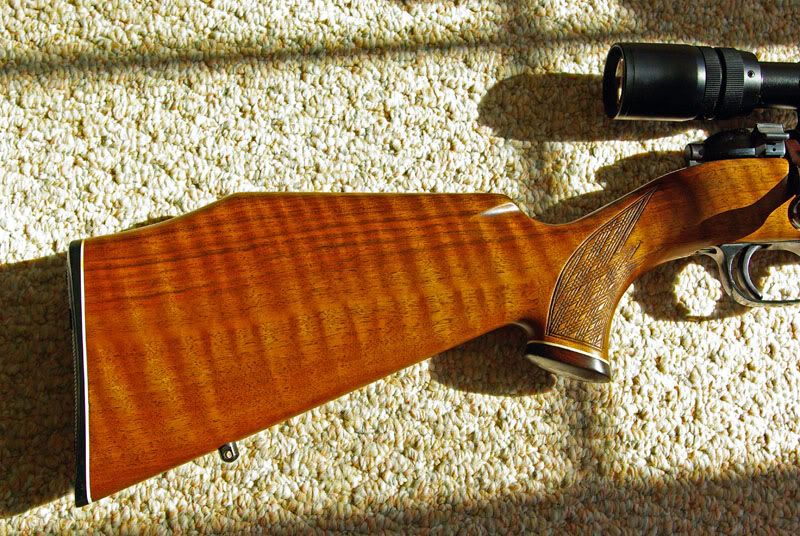
Ok, grab a cup of coffee and sit back. The top three photos are of my Winchester 72A which had a really good finish when I picked it up, for $200, but age was hiding the beauty of the grain. The other was for a customer.
Brief History:
I've used this process for four years now on Walnut and laminated stocks. This accounts for about six stocks per year. I've been doing them for our local gunsmith, who is a very discriminating individual. I do his own personal guns as well as his customers. There has never been a single problem with any of these, no matter the weather.
Benefits
No worries regarding humidity/drying time; runs, drips, errors or overlaps that a traditional Tru-Oil only finish can leave requiring sanding out, the end result is a finish smooth as a baby's bottom.
Step One; Preparation
Strip old stock, use a wet cloth over dents and use the tip of a steam iron, which swells the area around the dent and lifts out just about all except the deepest. Be aware that any sharp edged dents will probably require deeper sanding below the dent and then blend into the surrounding area. I use 220 grit sandpaper (always with the grain), primarily to avoid leaving deeper sanding marks and scratches. I constantly will backlight the stock turning it to view along the wood for any imperfections. When the desired smoothed finish shape is there, I go to 400 grit, then 800 grit.
Now de-whisker. With a wet cloth wipe down the entire stock and let dry. This raises small fibers or "splinters" which I now lightly sand off with 800 grit. Now lightly rub the stock down with 0000x steel wool.
Step Two; GO NO FURTHER!
This is important; check your work, use the light source. It is what it is, don't scrimp on your quality now and be satisfied with your prep results. The next part is the easiest.
Step Three; The Magic Elixir
Here's what you've waited for..,the formula!
I use Birchwood-Casey Tru-Oil and ArmorAll. Other brands of tire shine will also work, but I usually have enough ArmorAll around. I do not use grain filler or stain unless the stock really begs for it.
Spray on a coat of ArmorAll, rub it over the entire stock and wipe off the excess. Now rub a couple of fingers worth of Tru-Oil over the ArmorAll in all directions, but initially across the grain to fill the pores. (Doing sections at a time intially is best because you can see where you've been.) Once some coats have been built up, you can do one full side of the stock at a time. Rub briskly with palm and finger tips until the surface loses its tack and feels like glass. This may take 5-10 minutes but subsequent coats will go even faster. The first coats will appear dull, but subsequent coats will start to gloss up .
( EDITED:Added note thanks to Tom Beck suggestion- Every single coat uses ArmorAll and TruOil combination)
I will put on as many coats as required to give the perfect flat surface finish. Don't rush the coats or thickness application or you'll be rubbing longer.
As I continue once the sheen has been built up, I often lightly buff with 0000x steel wool. This gives a bit of bite for additional coats.
I can put two or three dozen coats on in a day and typically finish a stock in the same day and use it immediately. When I'm satisfied with the final coats I will often put a good furniture polish on a small piece of 0000x steel wool and gently rub it on in the direction of the grain, buff it off and add pure wax and buff again.
For a flatter sheen, the last step is a light 0000x steel wool buff without wax, your choice.
Why does this work?
I believe that there is a chemical reaction or catalyst occuring between the ArmorAll and the Tru-Oil that is much the same as a two-part epoxy that strengthens, hardens and gives such a rapid working/drying time. Don't panic; the process starts working only when you start rubbing the mix together and in.
I know this was long winded, but I hope it gives you greater satisfaction in a much shorter amount of time. Repairing small nicks later on is a snap, steam and/or sand the area, apply your "elixir" and it'll blend right in. Thanks for your patience and please feel free to ask about anything you feel I may have skipped over. Start with a beater stock if you have doubts, but don't
have any fear, this works like a charm.
I look forward to hearing from you after you give this a try and also please submit pictures/comments of your results.
If you don't like your results, I'll refund your money...,oh wait a minute, you didn't pay for this tutorial.


